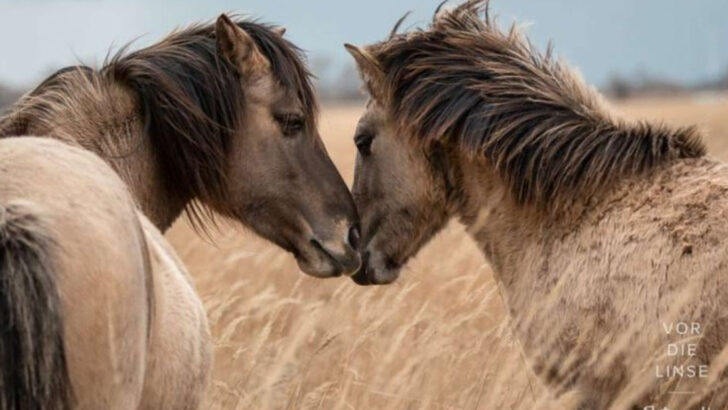They don’t need fences.
They don’t need us.
Across deserts, cliffs, grasslands, and frozen plateaus, wild horse herds thunder through places where no human hand guides their path. These animals live on instinct, grit, and generations of freedom—untouched, untrained, and unapologetically wild.
Each herd carries its own legend. Some trace their bloodlines back to ancient warriors. Others have carved their place into brutal terrain where few dare to follow. From North America’s Mustang bands to the icy wilderness of Siberia, they’ve survived war, storms, predators, and time itself.
This is not your average pony story.
These are 18 raw, rugged, and riveting horse communities still living on their own terms. Wild and willful, they remind us what freedom really looks like—hoofbeats flying across the earth, no one in the saddle.
Let’s meet them.
The Mustangs of the American West
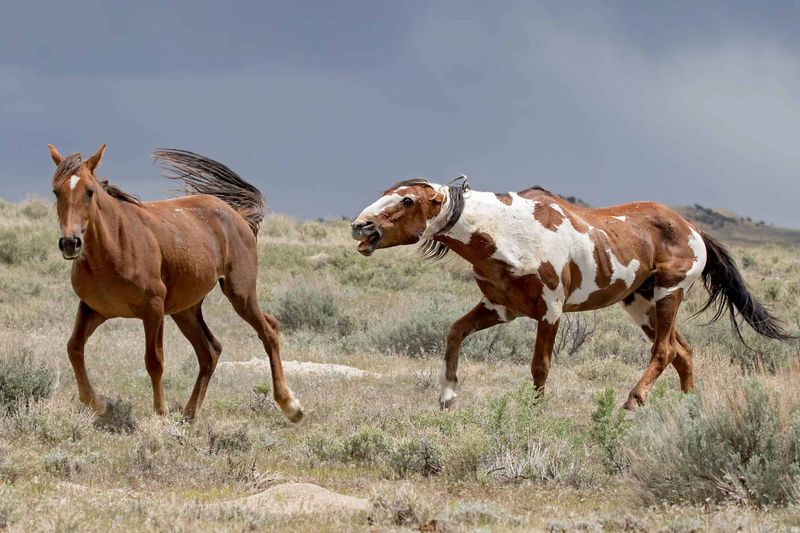
In the vast expanses of the American West, Mustangs roam free, embodying the spirit of freedom and adventure. These descendants of Spanish horses face challenges from harsh climates to limited resources.
Yet, they thrive, adapting with resilience. Mustang herds are known for their tight-knit social structures and strong bonds. Watching them gallop across the plains is a breathtaking sight that resonates with the heartbeats of history.
Mustangs have inspired countless legends, stories, and even laws to protect their wild nature. Experience the raw power and unyielding spirit of these incredible creatures.
Kaimanawa Horses of New Zealand
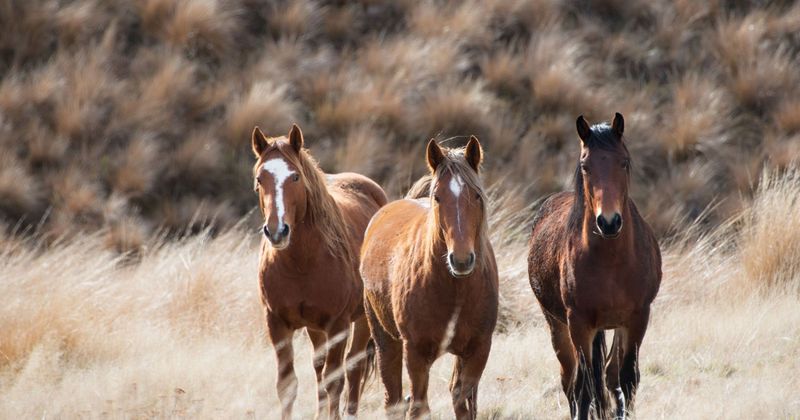
In New Zealand, the Kaimanawa horses roam the country’s central plateau, a testament to nature’s enduring spirit. These horses, with their rich chestnut coats and intelligent eyes, embody the essence of wild beauty.
Despite their isolation, Kaimanawa horses have adapted to the island’s unique ecosystem. Living in challenging terrains, they exhibit remarkable agility and intelligence.
Conservation efforts have been vital in maintaining their freedom. The Kaimanawa’s story is one of resilience and the ongoing struggle to balance nature and human intervention.
Namakwa Horses of Namibia
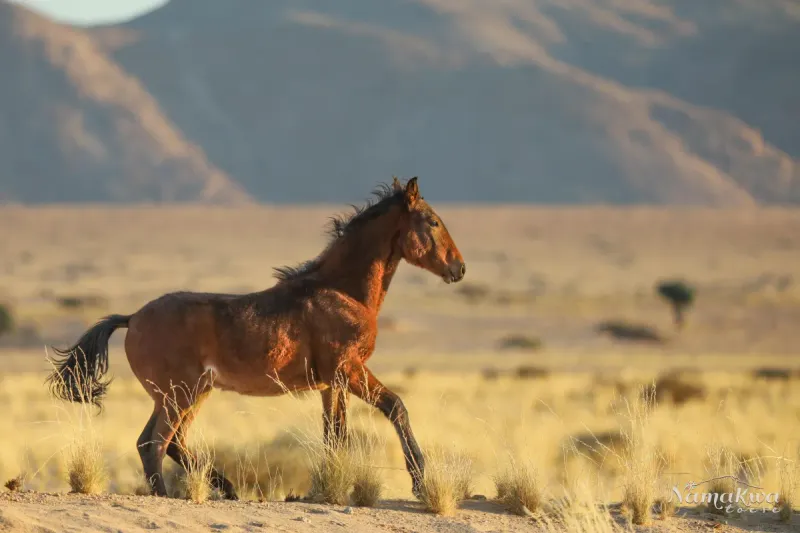
In the harsh deserts of Namibia, the Namakwa horses have carved out a niche of survival against all odds. These hardy creatures have adapted to the scarce resources and extreme temperatures.
Their ability to thrive in such an environment speaks volumes about their resilience. The Namakwa horses live in close-knit herds, relying on each other for survival.
Their story is one of perseverance, showcasing nature’s ability to adapt to even the most challenging conditions. Witnessing these horses in the wild is a humbling experience.
Pryor Mountain Wild Horses
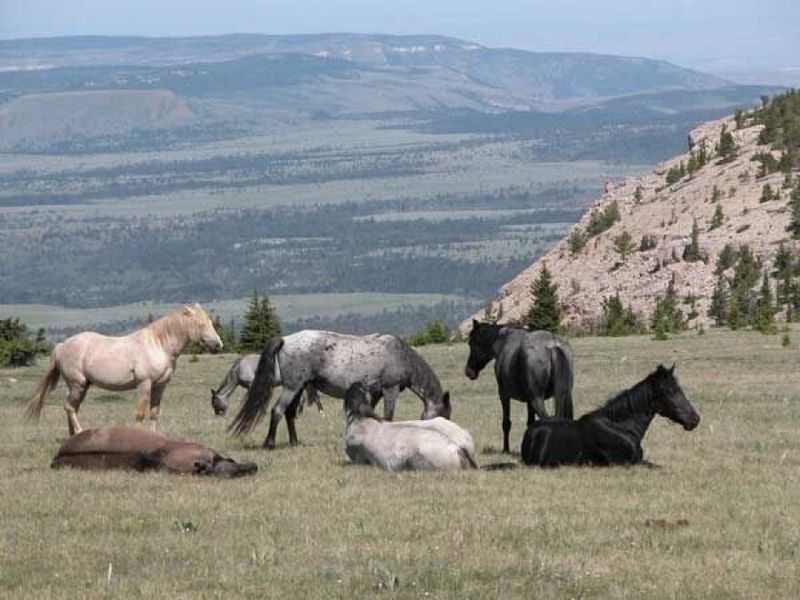
High in Montana’s Pryor Mountains, a unique band of wild horses roams. Known for their distinctive colors and sturdy build, these horses are a living link to the past. The harsh mountain environment has shaped their tough, resilient nature.
They exhibit vibrant social dynamics, with elaborate rituals and strong family bonds. Conservation efforts ensure their survival, balancing human interest with the need to preserve wildness.
The Pryor Mountain horses are more than just animals; they are symbols of endurance and the enduring spirit of the wilderness.
Camargue Horses of France
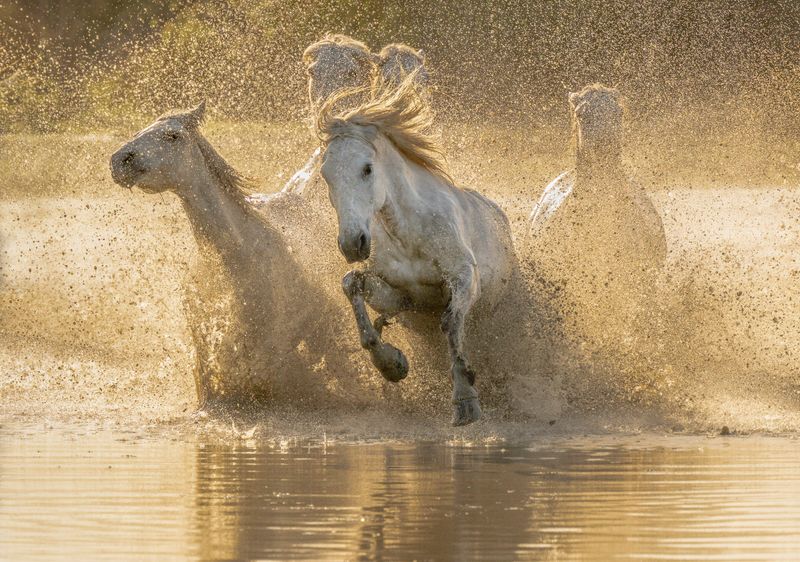
In the romantic marshlands of southern France, the Camargue horses steal the show with their striking white coats and graceful movements. These iconic horses are deeply entwined with the region’s culture and history.
Known for their intelligence and adaptability, they thrive in the wetlands, displaying an intuitive connection with their environment. The guardians of Camargue horses work tirelessly to maintain their freedom and preserve their natural habitat.
Observing these horses in their natural setting is witnessing poetry in motion, a blend of elegance and raw power.
Konik Horses of Poland

In the misty forests of Poland, Konik horses represent a successful conservation story. These small, robust horses are closely related to the ancient Tarpan, a now-extinct wild horse. Koniks thrive in the varied landscapes of Poland, from dense woods to open fields.
Their presence is pivotal in maintaining biodiversity, as they support the growth of native flora. Koniks demonstrate a perfect blend of wild instinct and gentle demeanor. Their story is one of rebirth, reconnecting modernity with ancient heritage.
Dulmen Ponies of Germany
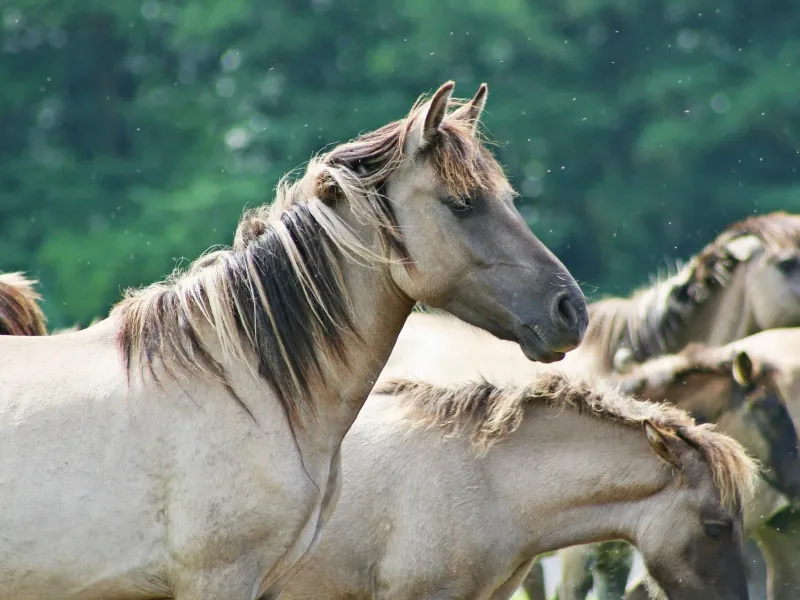
In Germany, the Dulmen ponies are a testament to harmony between nature and tradition. These ponies roam freely across the lush landscapes of North Rhine-Westphalia.
Known for their gentle temperament and small stature, they are beloved by locals and conservationists alike. The annual Dulmen pony roundup is a significant cultural event, drawing attention to their preservation.
As one of the last wild horse herds in Germany, they symbolize cultural heritage and natural beauty. Experiencing these ponies in their natural habitat offers a glimpse into a pastoral past.
Cumberland Island Horses
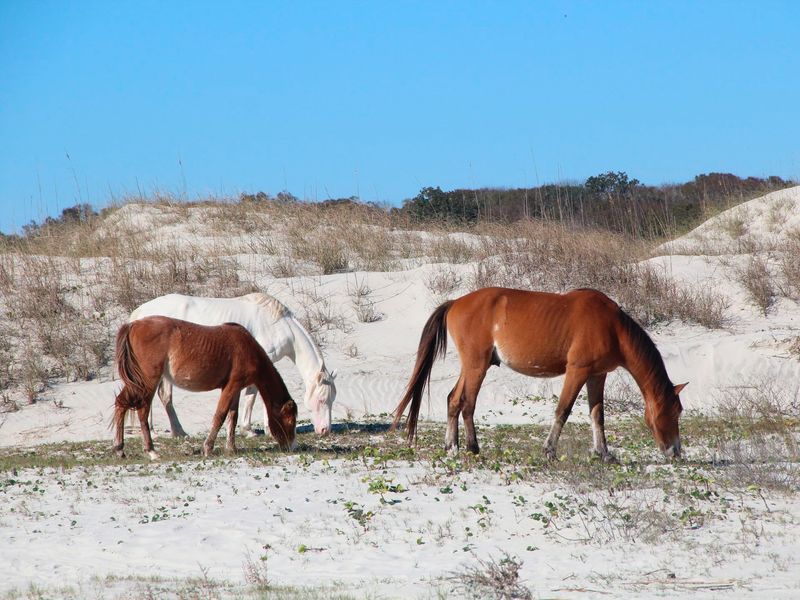
On the windswept shores of Georgia’s Cumberland Island, wild horses graze amidst the dunes and sea breeze. This island is their sanctuary, where they live with minimal human interference.
Cumberland horses are a blend of various breeds, resulting in diverse appearances and traits. Their presence adds to the island’s mystique, attracting curious visitors while sparking conservation debates.
These horses embody the spirit of the island, resilient and free. Observing them offers a peaceful escape from modern life, a reminder of nature’s timeless allure.
Sable Island Horses
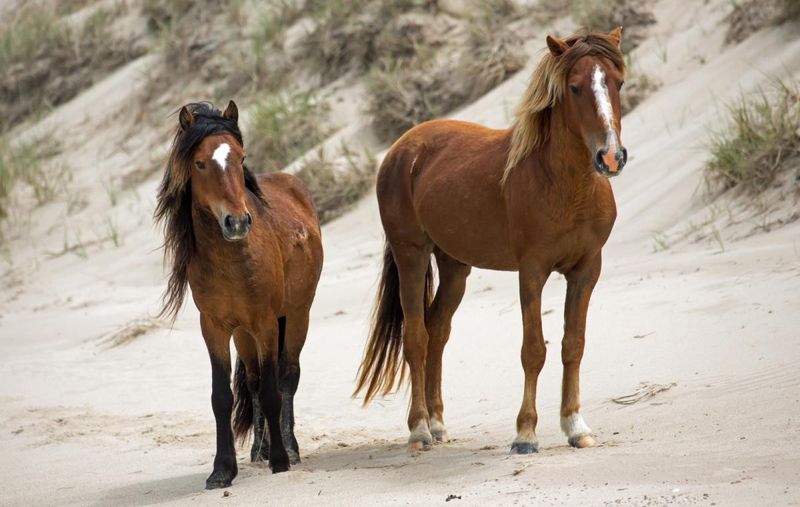
Off the coast of Nova Scotia, Sable Island is home to a unique population of wild horses. These horses have adapted to the island’s sandy terrains and harsh weather conditions. Their origins are shrouded in mystery, adding to their allure.
Sable Island horses are small, yet sturdy, known for their strong social structures and playful behaviors. Conservation policies ensure that they continue to thrive without human interference.
Visiting these horses is a surreal experience, offering a glimpse into a world where nature reigns supreme.
Bosnian Mountain Horses
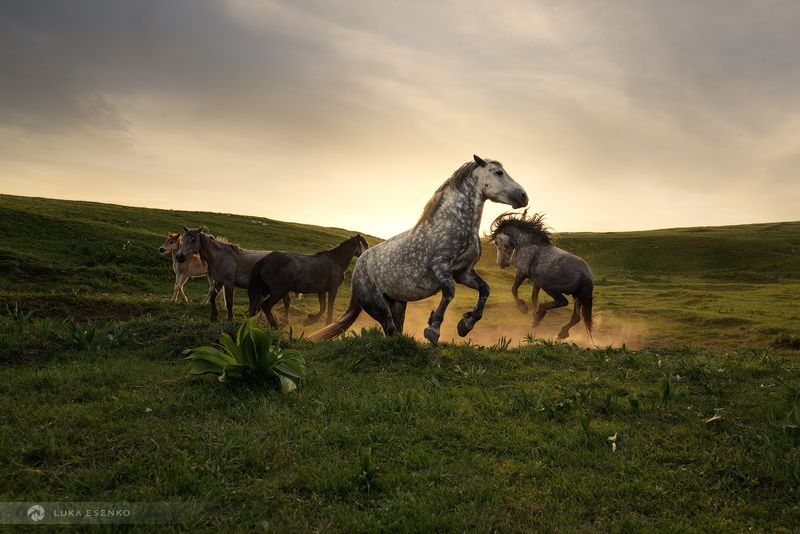
In the rugged Dinaric Alps, Bosnian Mountain horses roam freely, embodying the spirit of resilience. These horses are well-adapted to the mountainous terrain, known for their endurance and agility.
They play a vital role in local culture, symbolizing strength and tradition. Conservation efforts focus on preserving their natural habitat and traditional way of life.
Observing these horses offers insight into a way of life where nature and culture are deeply intertwined. Their presence in the wild is a reminder of the enduring bond between humans and nature.
Pindos Pony of Greece

In Greece, the Pindos pony embodies the spirit of ancient myths and legends. These ponies roam the rugged landscapes, often seen near historical ruins. Known for their sure-footedness and stamina, Pindos ponies are integral to local culture and history.
They have been used traditionally as pack animals, showcasing their strength and resilience. Conservation efforts aim to preserve their natural habitats and cultural significance.
Encountering these ponies is like stepping back in time, a connection to Greece’s mythical past and enduring natural beauty.
Giara Horses of Sardinia
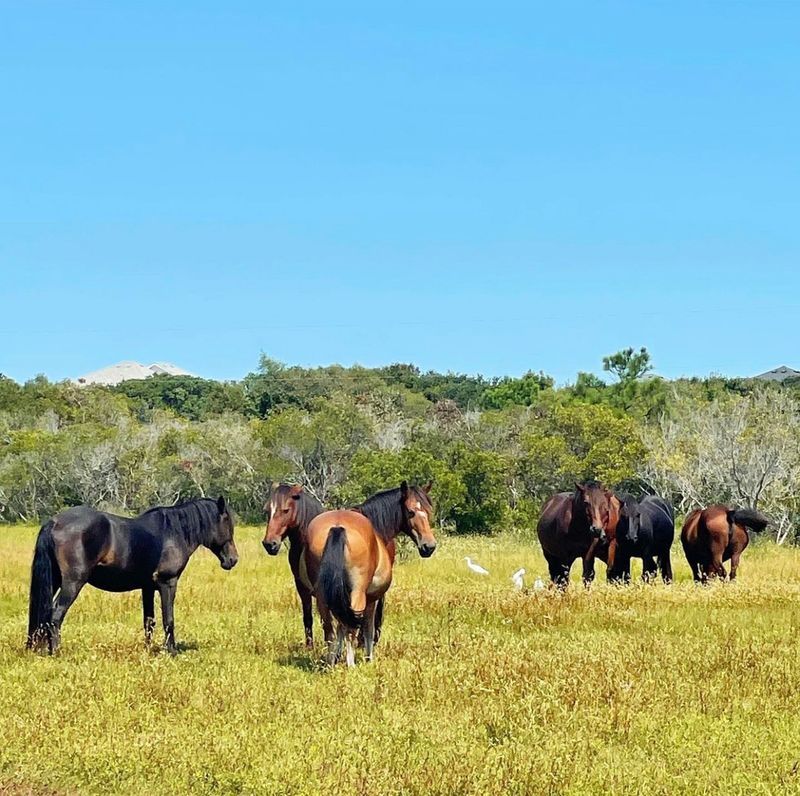
On the rocky plateaus of Sardinia, Giara horses stand out with their unique appearance and independent spirit. These small, sturdy horses have adapted to the island’s challenging environment, showcasing their resilience and resourcefulness.
Rich in history, they are believed to be descendants of ancient horses introduced to the island centuries ago. Today, they live freely, protected by conservation efforts that respect their habitat.
Observing Giara horses is a captivating experience, offering a glimpse into a world where nature and history coalesce beautifully.
Pryor Mountain Wild Horses
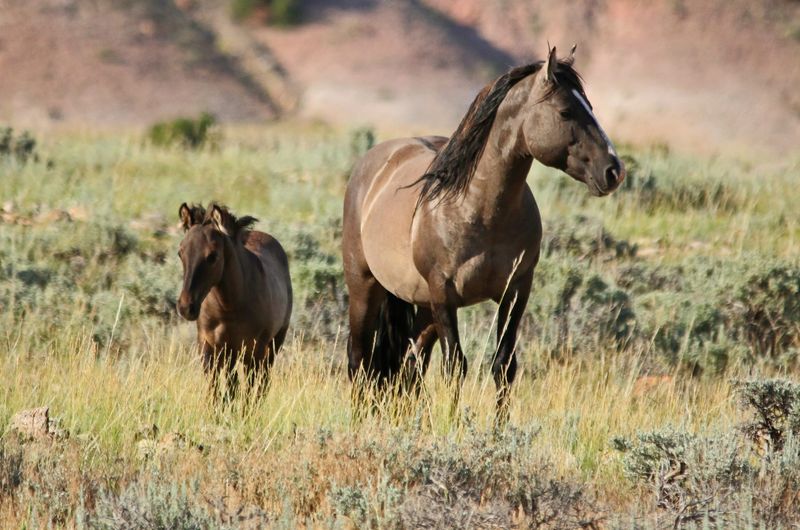
High in Montana’s Pryor Mountains, a unique band of wild horses roams. Known for their distinctive colors and sturdy build, these horses are a living link to the past. The harsh mountain environment has shaped their tough, resilient nature.
They exhibit vibrant social dynamics, with elaborate rituals and strong family bonds. Conservation efforts ensure their survival, balancing human interest with the need to preserve wildness.
The Pryor Mountain horses are more than just animals; they are symbols of endurance and the enduring spirit of the wilderness.
Sorraia Horses of Portugal
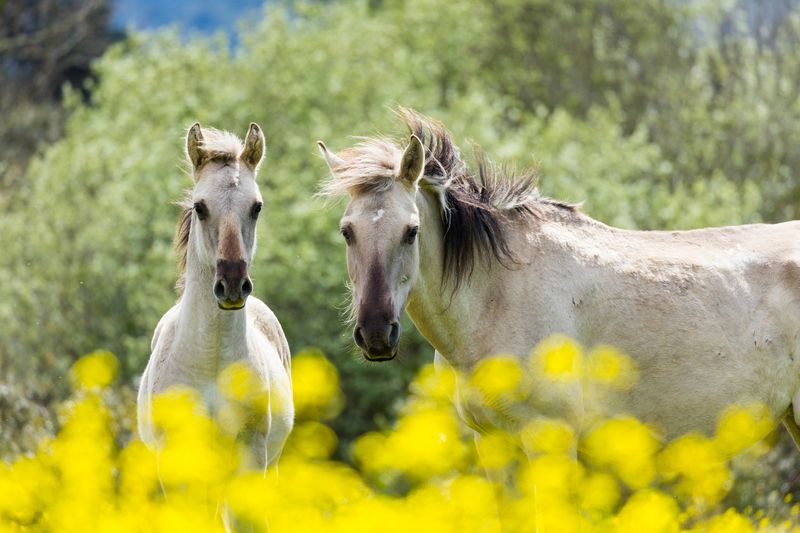
In Portugal, the Sorraia horses are living relics of ancient Iberian breeds, their elegant demeanor and unique markings setting them apart. These horses thrive along riverbanks, surrounded by lush vegetation and vibrant wildlife.
Known for their adaptability and intelligence, Sorraia horses have a rich history tied to the region’s culture. Efforts to preserve these horses focus on maintaining their genetic purity and natural habitat.
Observing them in the wild is a serene experience, where history and nature intertwine, offering a glimpse into a forgotten world.
Yakutian Horses of Siberia
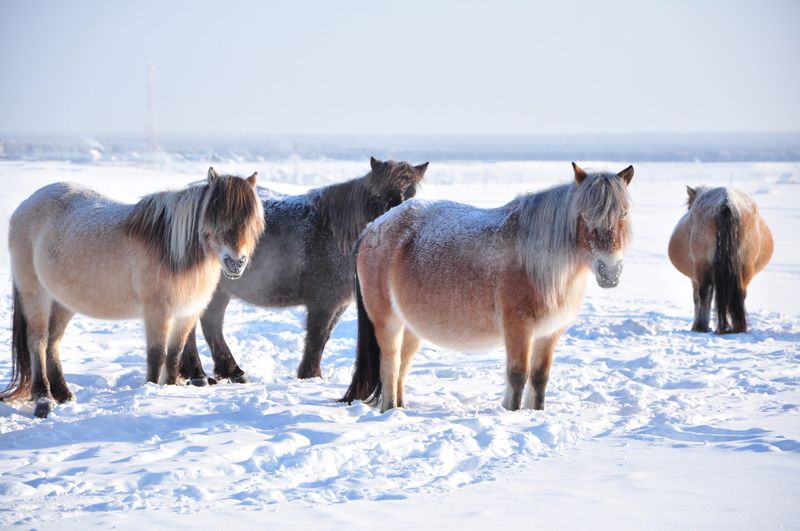
In the icy realms of Siberia, Yakutian horses stand resilient against the harshest winters. These horses have evolved thick coats and compact bodies, perfectly suited for extreme cold.
Known for their endurance and resourcefulness, they are crucial to the survival of local communities. Yakutian horses have a rich cultural history, deeply intertwined with the ways of indigenous peoples.
Observing them in their natural habitat reveals a world where survival is a delicate balance of adaptation and tradition. Their presence is a testament to life’s resilience in extreme environments.
Assateague Horses
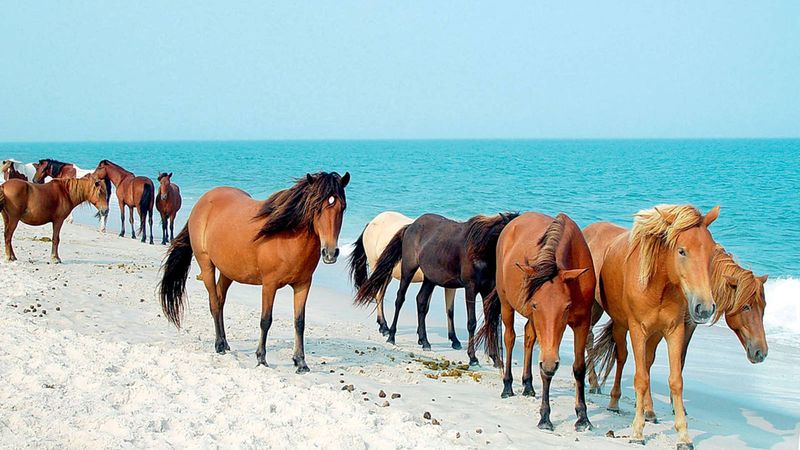
On Assateague Island, wild horses grace the sandy shores with their untamed beauty. Known for their rugged nature and diverse coats, they navigate the challenging coastal environment with ease.
These horses are a blend of various breeds, their origins shrouded in mystery and legend. Conservation efforts ensure their freedom while balancing the island’s delicate ecosystem.
Observing Assateague horses is a journey into a world where wildness is celebrated, a sanctuary untouched by time. Their presence enriches the island’s allure, drawing visitors into a narrative of nature’s enduring spirit.
Marismeño Horses of Spain
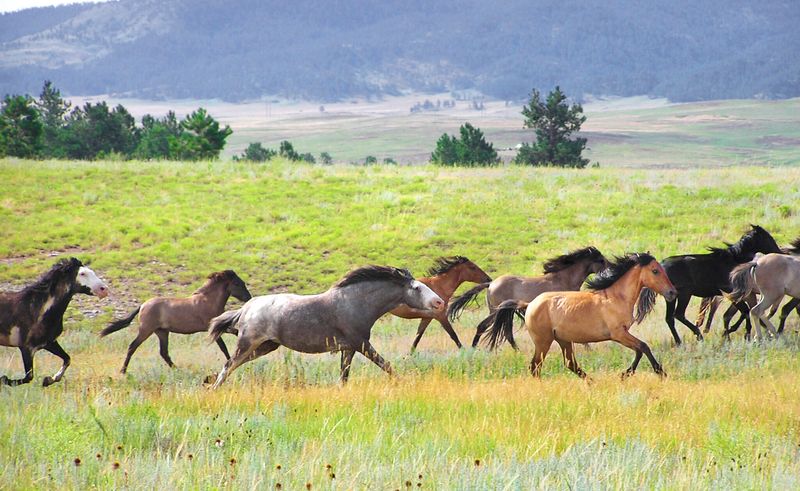
In Spain’s Doñana National Park, the Marismeño horses roam the wetlands, a symbol of Andalusia’s rich cultural tapestry. These horses, with their graceful form and spirited nature, are deeply woven into local traditions and folklore.
Living in a protected environment, they contribute to the park’s biodiversity, coexisting with a variety of wildlife. Conservation efforts focus on preserving their habitat and cultural significance.
Observing Marismeño horses is an immersion into a world where nature and culture harmonize, offering a glimpse into Spain’s vibrant history and natural beauty.
Retuerta Horses
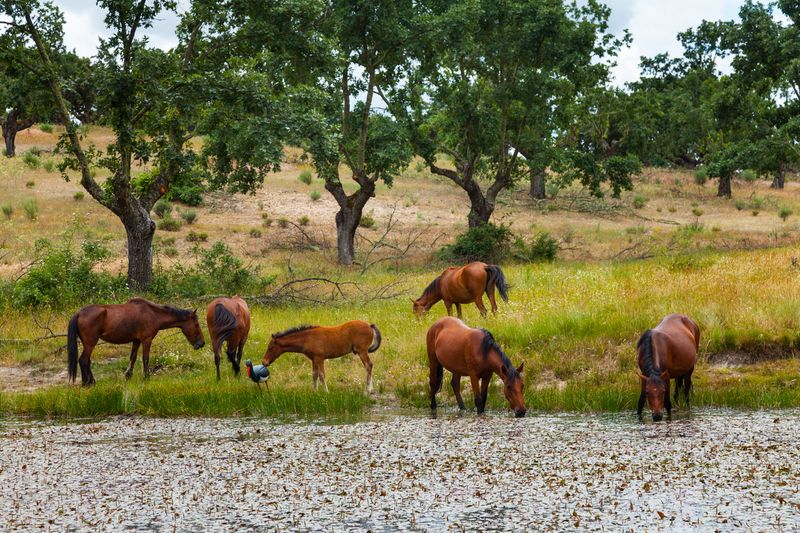
In the heart of Andalusia, Retuerta horses roam the landscapes, heralding a successful conservation story. These ancient horses are among the oldest breeds in Europe, their lineage preserved through dedicated efforts.
Retuerta horses thrive in a balance of wild freedom and gentle protection, living in harmony with their environment. Known for their resilience and adaptability, they symbolize a successful blend of history and modern conservation practices.
Observing these horses is a journey through time, offering insights into the enduring spirit of nature’s untamed beauty.

